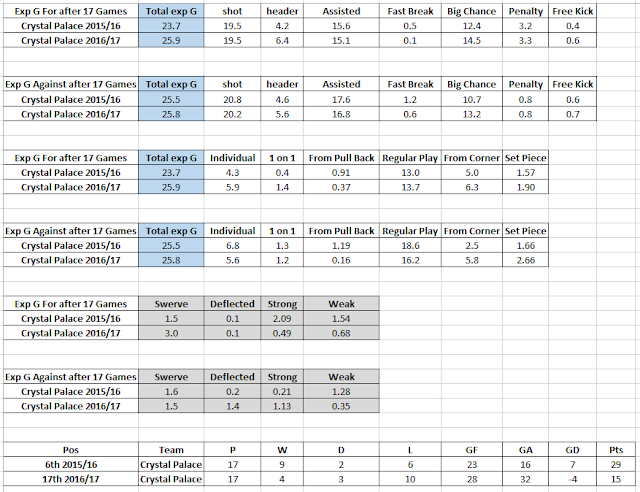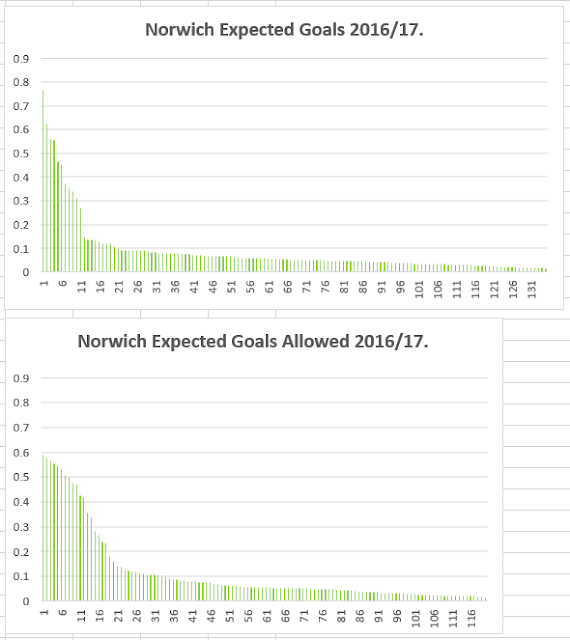Goal scorers, followed by goal keepers have been the most widely analysed positions in football.
The reasons are obvious, their main duties are closely connected. Strikers try the get the ball on target and into the net, whilst keepers do their best to prevent the latter.
In short, there is a readily identifiable series of actions and possible outcomes that can be used to attempt to define the abilities of the two positions.
Initially keepers were ranked simply by save percentage, the proportion of on target attempts that they prevented from turning into goals.
We should expect some variation in save percentages, even if every attempt carried exactly the same difficulty tariff and each keeper had the same talent for making saves.
If you toss a series of fair coins in a varied number of trials, the success rates of heads will largely fall in and around 50%, but some coins will appear more talented than others, just through chance.
Once you allow for this natural variation and unequal number of attempts faced by the individual keepers, the save percentages of Premier League keepers is still more widely dispersed than though mere chance.
We can conclude that either, some keepers are better at saving shots than others, not all shots are savable to the same degree or much more likely a combination of at least these two factors.
Expected goals models, which use shot location, type, style and placement may be used in an attempt to quantify the task faced by keepers for each individual on target attempt.
A weakly struck chip that drifts gently towards the centre of the goal at midriff height is eminently more savable than a powerfully hit shot that deflects towards the top corner and historical precedence can be used to assign such efforts differing likelihoods of being saved.
This type of analysis quickly yields keepers who have allowed fewer goals than the average keeper described by such models would conceded from the attempts faced.
For example, in 2015/16 Lukasz Fabianski allowed
44 non penalty and non own goals from
157 goal bound attempts compared to an expected number conceded of nearly
50. Similarly, Kasper Schmeichel allowed
32 from
128 attempts against a par score of just over
35.
Both are over performers, but if we look more deeply at each attempt by simulating the range of outcomes using an average stand in keeper, the Swansea stopper appears to have put in a more solidly impressive performance.
An average keeper would emulate or better Fabianski's 2015/16 shot stopping performance around 9% of the time, whereas he would replicate or better Schmeichel's above par season in over a quarter of the simulated trials.
Over performing shot stopping, therefore is an encouraging sign, but by no means a clear indication of consistent, above average talent that may persist. It may just be par ability boosted by luck.
The table above shows the keepers who played in both of the last two seasons and how many times they saved more shots than predicted by an average ability expected goals model.
Ten keepers were above average in both seasons, whereas eight were below par in consecutive campaigns.
Stoke and England's Jack Butland combines youth with two season's of over performance in terms of goals allowed compared to the goal bound efforts he has been required to save.
However, just as Schmeichel's 2015/16 season has a 25% chance of being replicated by a lucky, average keeper, the same is true, only more so for both of Butland's seasons.
His impressive over-performance in 2014/15 from relatively few attempts faced and his smaller over achieving 2015/16 season from a much larger sample size was in both cases replicated or bettered in just under 50% of trials.
Depending upon where we draw this probabilistic line, many of the keepers who have had two most recent above par performing seasons against an expected goals model begin to fall away.
de Gea's most recent season is reproduced in nearly 30% of average trials. Similar reservations apply to Pantilimon, Robles, Forster, Ospina and more marginally Cech.
Only three keepers have over performed in the previous two seasons, with location/style/placement corrected expected goals campaigns that each have a likelihood of 10% or less of being replicated by our average keeper.
Fabianski has the most impressive combination of dual over performance that is least likely to be emulated by an average performer, followed by Lloris and Adrian.
Conclusions should always be couched in probabilistic terms.
Butland and Forster, the two pretenders to Hart's England shirt may well be above average shot stoppers, but current evidence allows for the not insignificant possibility that both are reasonably capable keepers, who have enjoyed a run of good fortune.
And both may be a step or two behind possibly the best combination of likely longevity and current ability shown in the Premier League by Spurs' Hugo Lloris.



















































